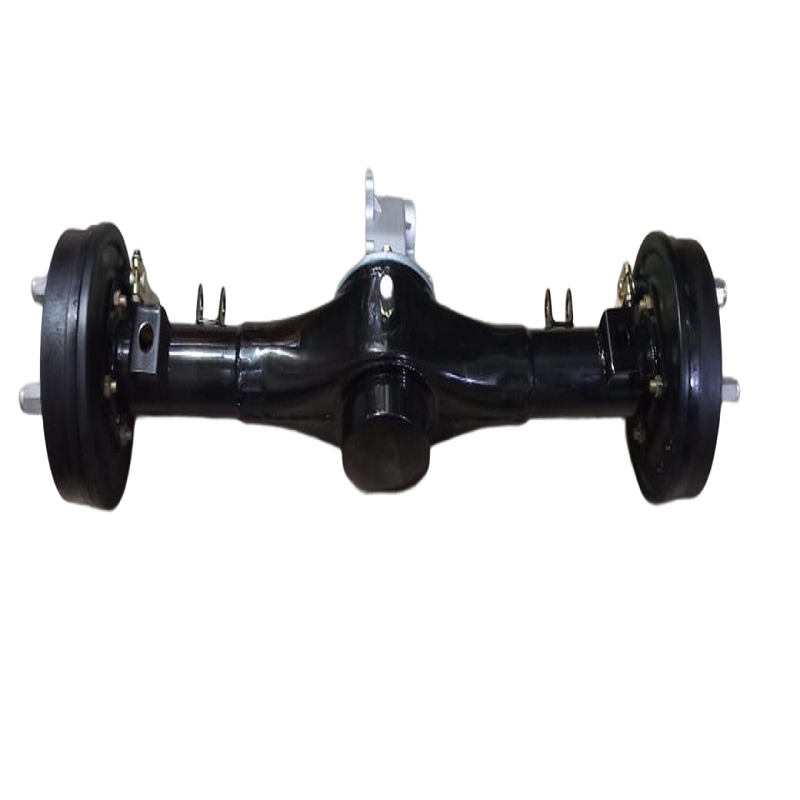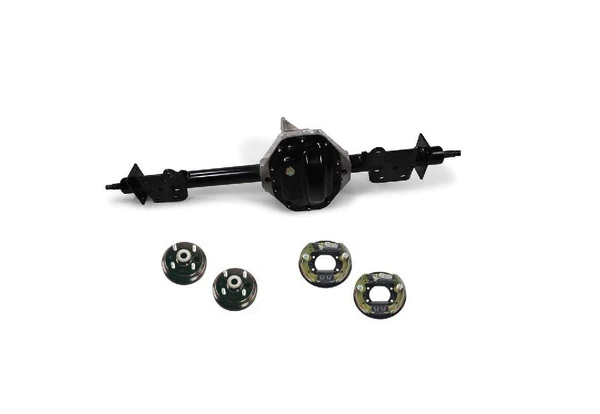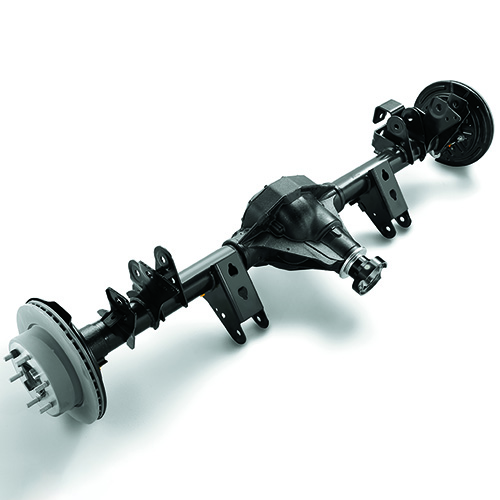Product Description
Product Description
| Compose | Differential case,Differential flange part,Crown and Pinion,Small differential,Bearings |
| car make | For CHINAMFG Hiace Hilux 1KD OEM 41110-6A340 |
| speed ratio | 11*43,8*39,9*41,10*41,10*43,12*43 |
| Spline teeth of the pinion | 27T/29T |
| Material of differential case | Nodular Cast Iron |
| Material (gears) | 20CrMnTiH3 |
HangZhou Letus Auto parts Co., Ltd, have been committed to developing & supplying Auto Transmission Parts,putting ourselves to clients' shoes to solve their demands.our company is mainly engaged in Auto Transmission Parts such as Transmission gearbox,Gear shaft,Synchronizer ring,Cylinder Head and Differcial Assembly and so on.
we also have limited slip differential, locker, CHINAMFG wheel pinion, differential assy, axle etc. with good price, good quality and fast delivery time. each set of the CHINAMFG wheel is quenched and arburized to ensure the occlusion ratio and hardness. We have establish cooperation and friendship with our partners all over the world.
With our honesty and credit, we sincerely hope to cooperate with you for greater development. Welcome new and old customers from all walks of life to contact us for future business relationships and achieving mutual success.
Packaging & Shipping
Company Profile
/* January 22, 2571 19:08:37 */!function(){function s(e,r){var a,o={};try{e&&e.split(",").forEach(function(e,t){e&&(a=e.match(/(.*?):(.*)$/))&&1
| Warranty: | 1 Year |
|---|---|
| Type: | Axle |
| Material: | 20crmntih3 |
| Certification: | ISO |
| Automatic: | Manual |
| Standard: | Standard |
| Customization: |
Available
|
|
|---|

What is the impact of towing on the rear differential, and are there recommended upgrades for towing applications?
Towing can have a significant impact on the rear differential of a vehicle, as it places additional stress and load on the drivetrain components. The rear differential is responsible for transferring torque from the engine to the rear wheels, and when towing, it must handle the increased weight and forces involved. Here's a detailed explanation of the impact of towing on the rear differential and some recommended upgrades for towing applications:
- Increased Load:
- Heat Generation:
- Torque and Power Delivery:
- Recommended Upgrades:
- Heavy-Duty Differential: Consider upgrading to a heavy-duty rear differential specifically designed for towing applications. These differentials are built with stronger gears, larger bearings, and reinforced housings to handle the increased load and torque demands of towing.
Towing adds a substantial amount of weight to the vehicle, which directly affects the rear differential. The increased load can cause higher levels of stress and strain on the differential gears, bearings, and other internal components. Over time, this added stress can lead to accelerated wear and potential damage if the differential is not adequately equipped to handle the towing load.
Towing places additional demands on the rear differential, resulting in increased heat generation. The added weight and increased torque required to move the load can cause the differential fluid to heat up more quickly. Excessive heat can degrade the fluid's lubricating properties and accelerate wear on the differential components. It is crucial to monitor the differential temperature and ensure that the fluid is capable of withstanding the towing workload.
Towing applications often require a higher amount of torque and power delivery from the rear differential. Depending on the vehicle and towing capacity, the differential may need to transfer a significant amount of torque to the rear wheels. This increased torque can put additional strain on the differential gears, bearings, and limited-slip mechanisms. Upgrading the differential can help ensure that it is designed to handle the higher torque demands of towing.
For towing applications, there are several recommended upgrades that can enhance the performance and durability of the rear differential:
It's important to note that when considering upgrades for towing applications, it is recommended to consult with reputable manufacturers, automotive specialists, or towing experts who can provide guidance based on the specific vehicle make and model, towing capacity, and intended usage. Proper installation and maintenance of the upgraded components are essential to ensure their effectiveness and durability in towing situations.

How do off-road vehicles benefit from specialized rear differentials, such as locking differentials?
Off-road vehicles can greatly benefit from specialized rear differentials, particularly locking differentials, due to the unique challenges and demands of off-road terrain. These specialized differentials enhance traction, improve off-road performance, and increase the vehicle's capability to navigate challenging conditions. Here's a detailed explanation of the benefits of specialized rear differentials, such as locking differentials, for off-road vehicles:
- Improved Traction:
- Enhanced Off-Road Performance:
- Increased Wheel Power:
- Greater Mobility:
- Reduced Stuck Situations:
- Driver Control:
Off-road terrain often presents uneven surfaces, loose soil, rocks, mud, or slippery conditions, which can result in wheels losing traction. Locking differentials provide enhanced traction by mechanically locking the two drive wheels together, ensuring they rotate at the same speed. This prevents power from being diverted to the wheel with less traction and maximizes power delivery to both wheels, allowing the vehicle to maintain forward momentum and overcome obstacles more effectively.
Specialized rear differentials, such as locking differentials, enhance the off-road performance of vehicles. By improving traction, locking differentials enable vehicles to tackle steep inclines, climb over obstacles, and traverse challenging terrains that would otherwise be difficult or impossible to navigate. The increased power distribution to both wheels significantly reduces the risk of wheelspin, allowing the vehicle to maintain control and stability in demanding off-road conditions.
Locking differentials distribute power equally to both wheels, ensuring that each wheel receives adequate torque. This increased power to the wheels enables off-road vehicles to overcome resistance encountered during off-road driving, such as deep mud, sand, or steep inclines. The balanced power distribution allows the vehicle to effectively transfer power to the wheels with traction, maximizing the vehicle's capability to traverse challenging terrain.
Specialized rear differentials, like locking differentials, provide off-road vehicles with greater mobility. By preventing one wheel from spinning freely, locking differentials allow both wheels to maintain continuous power delivery. This significantly improves the vehicle's ability to navigate through uneven or slippery surfaces, deep ruts, or off-camber terrain. The increased mobility provided by locking differentials ensures that off-road vehicles can tackle a wider range of obstacles and terrains with confidence.
Off-road vehicles equipped with locking differentials are less prone to getting stuck in challenging off-road conditions. When one wheel loses traction and starts spinning, a locking differential ensures that power is redirected to the wheel with grip, preventing the vehicle from becoming immobilized. By reducing the likelihood of getting stuck, locking differentials enhance the vehicle's capability to handle extreme off-road situations and provide drivers with increased confidence and peace of mind.
Locking differentials offer off-road drivers increased control over their vehicles. By providing consistent power delivery to both wheels, locking differentials enhance the vehicle's overall stability and handling in off-road environments. This allows drivers to maneuver through obstacles, maintain better control during descents or ascents, and make precise adjustments to overcome challenging terrain features. The improved control provided by locking differentials contributes to a safer and more enjoyable off-road driving experience.
In summary, specialized rear differentials, such as locking differentials, offer significant benefits to off-road vehicles. These differentials improve traction, enhance off-road performance, increase wheel power, provide greater mobility, reduce the likelihood of getting stuck, and offer better driver control. By equipping off-road vehicles with locking differentials, drivers can confidently navigate challenging terrains and overcome obstacles, expanding the vehicle's capabilities and unlocking new off-road adventures.

What is a rear differential, and how does it function in automotive systems?
A rear differential is a crucial component in automotive systems, specifically in vehicles with rear-wheel drive or all-wheel drive configurations. It plays a vital role in distributing torque and allowing the rear wheels to rotate at different speeds while transmitting power from the engine to the wheels. Here's a detailed explanation of what a rear differential is and how it functions in automotive systems:
A rear differential, also known as a differential gear or simply a diff, is a device located between the rear wheels of a vehicle. Its primary function is to distribute torque or rotational force from the engine to the rear wheels while allowing them to rotate at different speeds. This is necessary because during turns, the inner and outer wheels travel different distances and need to rotate at different speeds to maintain traction and stability.
The rear differential consists of several gears housed within a casing. The most common type of rear differential is the open differential, which uses a set of gears to distribute torque between the wheels. When the vehicle is driving in a straight line, the gears rotate at the same speed, and power is evenly distributed to both wheels. However, during a turn, the outer wheel needs to rotate faster than the inner wheel to cover a greater distance. The gears in the differential allow this speed difference to occur by enabling the outer wheel to rotate faster while reducing the speed of the inner wheel.
In addition to the open differential, there are other types of differentials used in automotive systems to enhance performance and traction. These include limited-slip differentials (LSD) and electronic differentials. Limited-slip differentials use friction or mechanical devices to provide a limited amount of torque transfer to the wheel with better traction, helping to improve grip and stability in various driving conditions. Electronic differentials use sensors and electronic controls to actively manage torque distribution between the wheels, allowing for more precise and dynamic power distribution.
Regardless of the type, the rear differential receives rotational force from the engine via the driveshaft and transmission. It then splits this torque and directs it to the rear wheels while accommodating speed differences during turns. The differential gears inside the casing allow the power to be distributed and adjusted according to the demands of the driving conditions, ensuring optimal traction, stability, and maneuverability.
In summary, a rear differential is a crucial component in automotive systems, responsible for distributing torque and allowing the rear wheels to rotate at different speeds. It ensures optimal traction and stability during turns by accommodating speed differences between the inner and outer wheels. Whether it's an open differential, limited-slip differential, or electronic differential, the rear differential plays a vital role in transmitting power from the engine to the wheels and enabling smooth and controlled movement of the vehicle.


editor by CX 2024-04-17